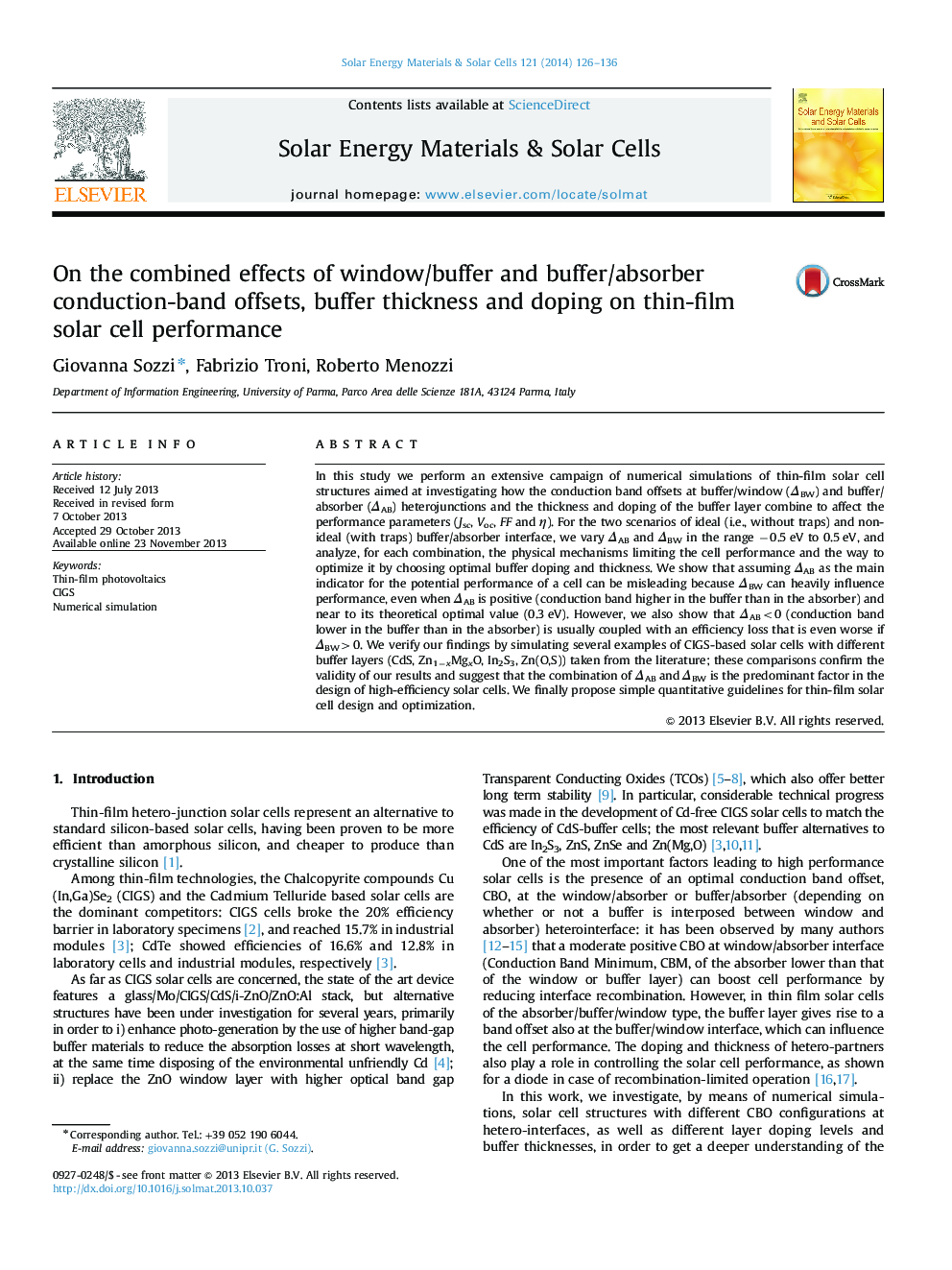| کد مقاله | کد نشریه | سال انتشار | مقاله انگلیسی | نسخه تمام متن |
|---|---|---|---|---|
| 78215 | 49320 | 2014 | 11 صفحه PDF | دانلود رایگان |
• We simulate thin-film solar cells with a window/buffer/absorber structure.
• We study the effect of conduction band offsets (CBOs) on performance.
• The buffer/absorber CBO is not the sole parameter impacting on performance.
• The window/buffer CBO is shown to play a major role.
• When applied to published experimental data our model shows a good match.
In this study we perform an extensive campaign of numerical simulations of thin-film solar cell structures aimed at investigating how the conduction band offsets at buffer/window (ΔBW) and buffer/absorber (ΔAB) heterojunctions and the thickness and doping of the buffer layer combine to affect the performance parameters (Jsc, Voc, FF and η). For the two scenarios of ideal (i.e., without traps) and non-ideal (with traps) buffer/absorber interface, we vary ΔAB and ΔBW in the range −0.5 eV to 0.5 eV, and analyze, for each combination, the physical mechanisms limiting the cell performance and the way to optimize it by choosing optimal buffer doping and thickness. We show that assuming ΔAB as the main indicator for the potential performance of a cell can be misleading because ΔBW can heavily influence performance, even when ΔAB is positive (conduction band higher in the buffer than in the absorber) and near to its theoretical optimal value (0.3 eV). However, we also show that ΔAB<0 (conduction band lower in the buffer than in the absorber) is usually coupled with an efficiency loss that is even worse if ΔBW>0. We verify our findings by simulating several examples of CIGS-based solar cells with different buffer layers (CdS, Zn1−xMgxO, In2S3, Zn(O,S)) taken from the literature; these comparisons confirm the validity of our results and suggest that the combination of ΔAB and ΔBW is the predominant factor in the design of high-efficiency solar cells. We finally propose simple quantitative guidelines for thin-film solar cell design and optimization.
Journal: Solar Energy Materials and Solar Cells - Volume 121, February 2014, Pages 126–136
